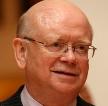Parliament is not moving from Cape Town
The Mayor of Tshwane, Mr Kgosientso Ramokgopa, recently announced that his city council was making ground available for the “inevitable move of parliament to Tshwane.” In his State of the Nation address, President Zuma raised again the possibility of moving parliament to “slash the travel costs of cabinet members and officials.”
I have news for the Mayor and the president. Parliament is not moving. Long after they have left office, parliament will still be in Cape Town.
As I sat in the Old Assembly Chamber the other day, waiting to speak in a tribute to the Late Dene Smuts, that exceptional MP and constitutional expert, I looked around at the paneled chamber, thinking of the past and the future. It has already seen so much history, warts and all, like it or not, it is part of South Africa’s history, belonging to all South Africans.
On a personal level, I first visited there over fifty years ago when I was a young aspiring politician and it is the place where I was sworn in as an MP twenty-five years ago.
It is where the fateful decision to enter the Second World War was taken. All the most offensive apartheid legislation was debated and passed there and it was where some people thought they would rule forever. Prime Minister HF Verwoerd was assassinated while sitting in his seat there. And yet for the past generation, since the ANC came to power, it has been that party’s caucus room.
The Old Assembly is a small part of a vast parliamentary complex, parts of which date back to the old Cape Parliament in 1884. It also contains offices for all the MPs in both the National Assembly and the National Council of Provinces, the staff serving the parties and hundreds of parliamentary officials.
Marks buildings now houses the opposition parties but in its day it provided accommodation for both Prime Ministers Hertzog and General JC Smuts, with the cabinet room on the second floor and offices for all the ministers.
Tuynhuis, the office of our four presidents since 1994 and the others before that, is a beautiful old building dating from 1700. It is near the Good Hope building, also very old. This has a debating chamber and offices for many MPs.
Both of these are adjacent to the National Assembly wing, built thirty years ago in President PW Botha’s time when South Africa embarked on the Tricameral Parliament, taking its first steps away from all-white power and control.
The National Assembly saw the 2 February 1990 speech of President FW de Klerk when he announced the release of Nelson Mandela, the unbanning of the ANC and the commencement of negotiations for a new non-racial future. The end of apartheid was at hand.
In the words of President Nelson Mandela, “It was a breathtaking moment, for in one sweeping action he had virtually normalised the situation in South Africa. Our world had changed overnight.”
The National Assembly was also the place where Nelson Mandela was elected by Parliament as the President of South Africa. It was where the Constitutional Assembly sat and where President Mbeki’s famous “I am an African speech was delivered.”
It was also where President Mbeki, President Motlanthe and President Zuma were elected to office. At one time Parliament was a symbol of the exclusion of the majority of our population from government; for many years now it has belonged to all South Africans as the seat and the centre of our Constitutional Democracy.
The president’s argument and his bid to revive the twenty five year old discussion about moving parliament is based on money and the savings made possible if cabinet members and officials did not have to fly to Cape Town.
Surely, though, if parliament moved, while cabinet members would not have to fly around, most MPs would have to fly in the opposite direction from the Western Cape, the Northern Cape, Free State and Kwa Zulu Natal, as well as parts of Limpopo and, Mpumalanga.
New housing for most of the MPs, perhaps three or four hundred of them, would have to be built at a cost of several hundred million Rand. The same would apply to many officials who would have to travel from Cape Town; or is it intended that they should all lose their jobs? Some have developed decades of valuable experience and this would be lost to parliament if they had to be replaced by new people recruited in Tshwane.
Then the cost of replicating the accommodation for debating chambers, caucus rooms, committee rooms, kitchens, dining rooms and offices for hundreds of MPs and officials in a suitable parliamentary building would be astronomically expensive, probably costing another billion or two Rand.
An unspoken reason for considering moving is that Cape Town and the Western Cape are governed by the DA and not by the ANC, some of whose members think it is an affront that the seat of parliament is in an opposition stronghold.
One can point out that governments come and go, as do presidents and mayors. It is foreseeable that South Africa will have a government in a few years’ time that is not an ANC government and it is certainly possible that before too long another party will govern Tshwane.
Imagine if all that money was spent in the upheaval of moving parliament and it ended up being moved to a DA controlled Tshwane.
Perhaps more important than the cost, is the destruction of a national symbol with a great history that belongs to all of us. Destroying that would be wrong, in my view, and I predict that it will not happen. Parliament will not be moving to Tshwane.
Douglas Gibson is a former Opposition Chief Whip and former ambassador to Thailand.
This article first appeared in The Star.

